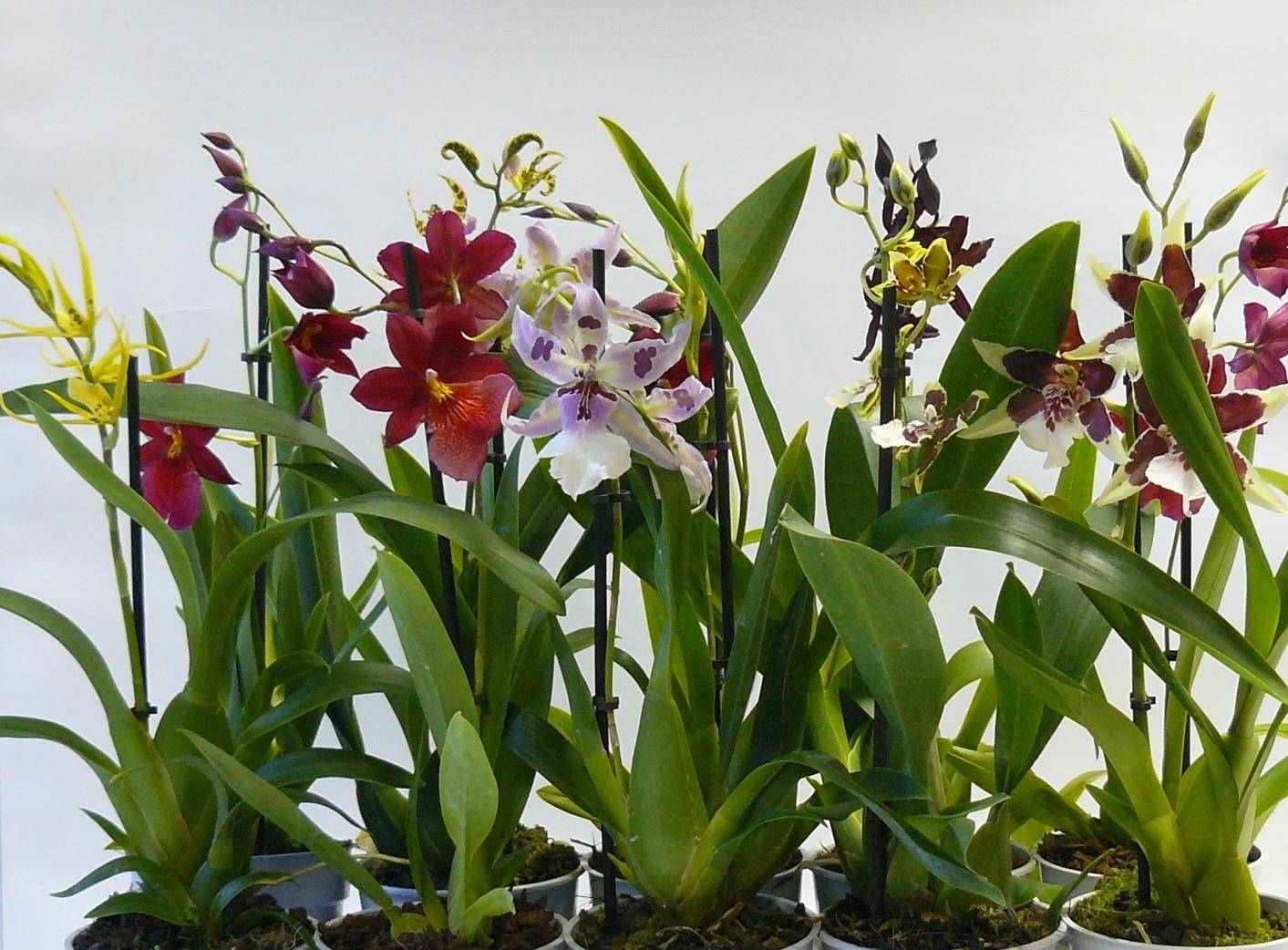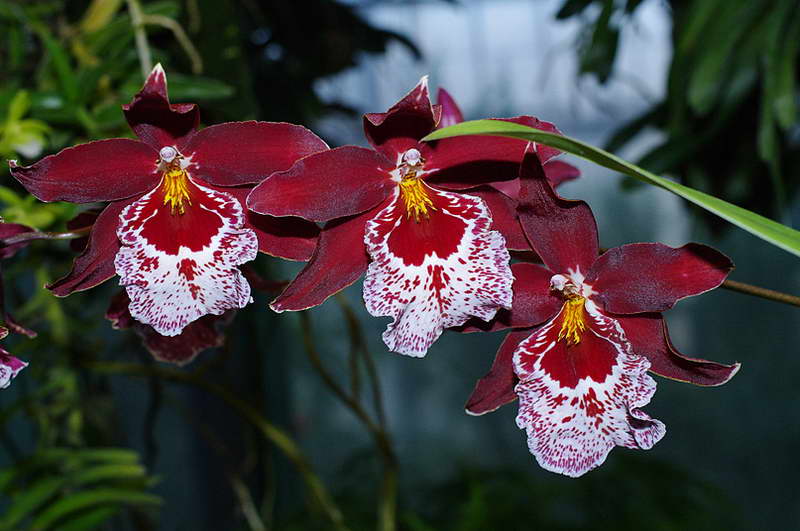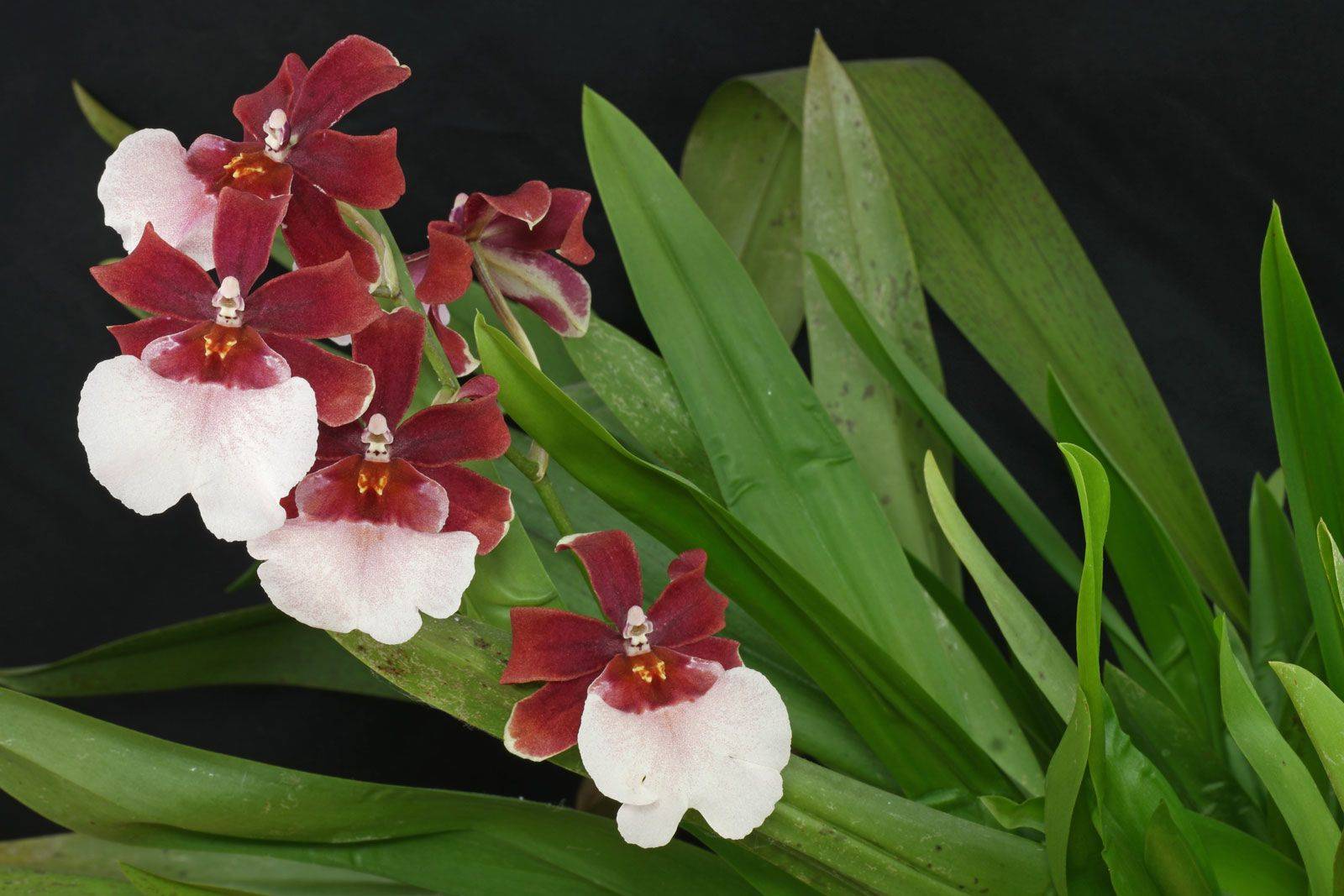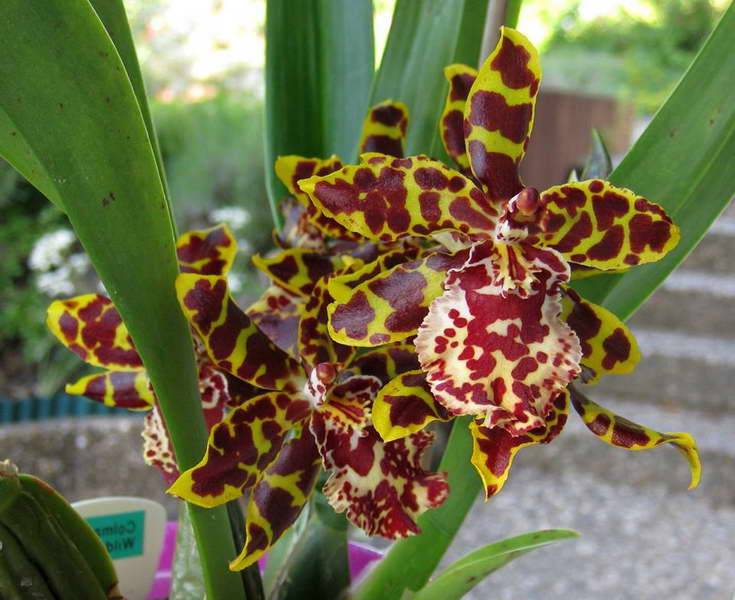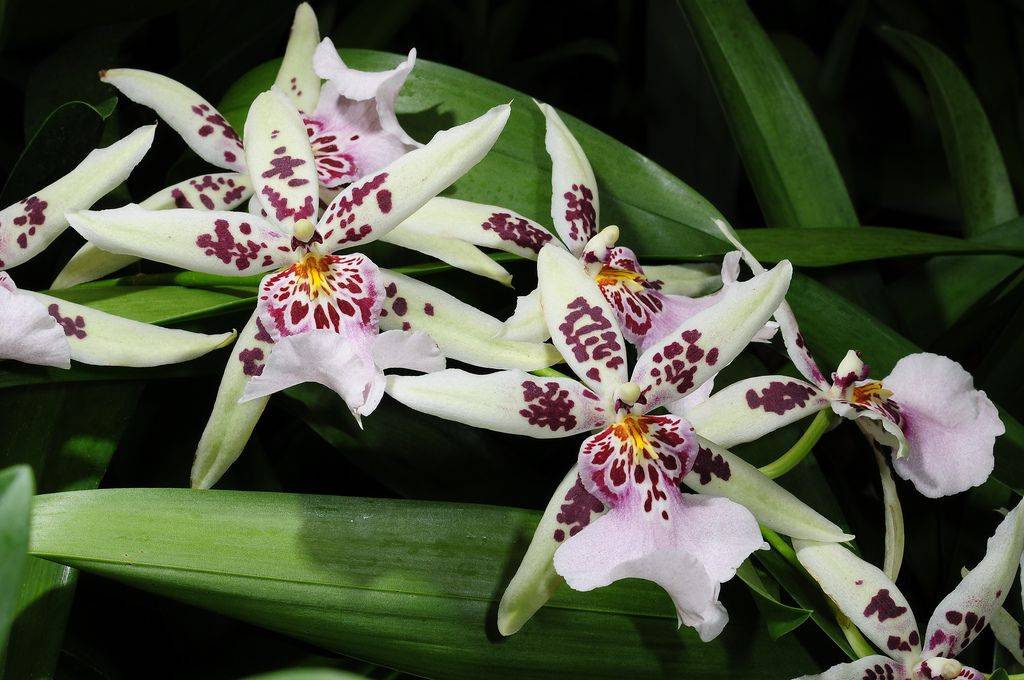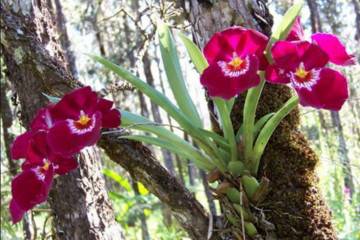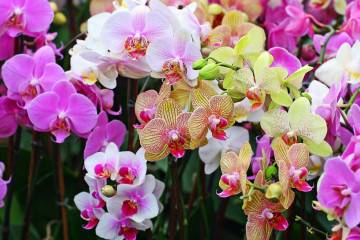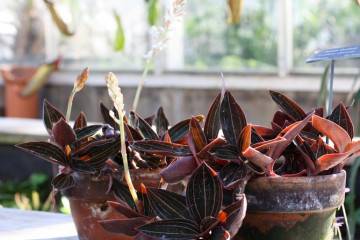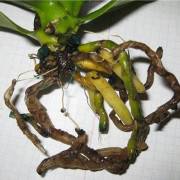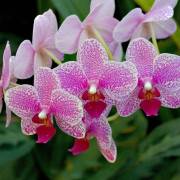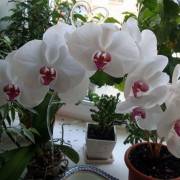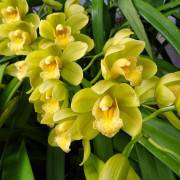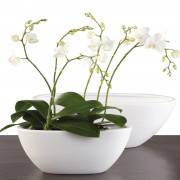Cambria orchid - home care
Content:
Indoor orchids are the most beautiful flowers that any housewife would like to plant. However, many of them require special care and attention. Fortunately, the cambrian orchid, which is easy to care for at home, is a type of flower that is quite unpretentious. Of course, you will have to follow some rules, but the plant is suitable for growing even for beginners.
What does the cambria orchid look like and which family it belongs to
Cambrian orchid flowers are a hybrid; such a plant does not exist in nature. For the first time, the culture was obtained in 1900 by a Belgian biologist. Currently, under this name, various hybrids are combined, named after the people who bred them.
On the sides, pseudobulbs (false bulbs) are formed, which are used for reproduction and easier transfer of extreme conditions. The more such shoots, the stronger the orchid and the more luxuriant the flowering.
On each pseudobulb, up to 3 dark green long and narrow leaves are formed. These types of orchids do not have such a powerful root system as others. The appearance of several peduncles at the same time is possible. The size of the flowers is from 5 to 10 cm, the colors are very diverse. It blooms several times a year.
Common varieties
There are several varieties of this beautiful orchid. The most popular ones are:
- Cambria Mix. This is the name of a hybrid with a non-natural origin. The name is used commercially to refer to another subgroup of colors;
- Beallara Margarita Holm is a hybrid characterized by rather tall stems with a large number of flowers. The petals are dark red with white spots and strokes. Another difference is that this species blooms all year round, regardless of time. During flowering, a pleasant aroma is noted;
- Catatante Pacific Sun Sport. The hybrid is obtained by crossing several species. It is easy to recognize by its characteristic oval-shaped pseudobulbs. The color is varied: from orange to purple with white specks and strokes. Sharp leaves;
- Colmanara Tropic Jungle. Differs in long and thin leaves. The variety is obtained by crossing several different species. The orchid blooms twice a year, the number of flowers on a peduncle can reach 10. The colors of the petals vary from red and brown to yellow and white. There is a strongly marked outgrowth of a white-red lip;
- Odontoglossum Stirbik. The hybrid variety perfectly perceives the coolness, therefore it grows easily in an apartment environment. Leaves are lanceolate, their number increases with age. Flowers are formed constantly, on one peduncle there are up to 7 pieces, they are very similar to asterisks. There are yellow, red, white;
- Black Cat. An unusual hybrid with very interesting flowers. The petals are black, with a yellow border around the edges.
These are just some of the cambrian orchid hybrids. Breeders continue to crossbreed different varieties and get new ones.
Features of caring for a flower at home
Cambria is a low maintenance orchid, which is why it is suitable for those who are just starting to grow these beautiful flowers. However, some features are still worth knowing and following some rules.
Temperature
All orchids are classified into several types depending on the temperature. The Cambrian species prefers cool indoor air. The best option would be a temperature between 10 ° C and 30 ° C. In winter, the indicators should be in the range of 10-12 ° С, and in summer - up to 24 ° С.
Lighting
The orchid is a light-loving plant, but it does not tolerate direct sunlight. In nature, trees are closed from the sun, so at home it is required to provide the culture with similar conditions. If the pot is located on a windowsill, then it is recommended to cover the window with a light curtain to protect the orchid from burns.
Watering
Watering is carried out after the soil has dried. Most often, the plant begins to wither when irrigation rules are not followed and the pot is not suitable. The container should have several holes and good drainage. When watering, the water should not stagnate. The process itself is carried out as follows:
- The pot is placed in a large container,
- Carefully water the flower without touching the root collar. The water should not reach the brim for a couple of centimeters.
- Leave the pot until all the liquid is gone.
After that, you can rearrange the plant to its usual place.
Spraying
Spraying can be carried out periodically, orchids like high humidity. However, the procedure should be carried out carefully in order to prevent severe waterlogging and not to provoke rotting.
Humidity
In nature, orchids grow in high humidity, so it is worth maintaining such conditions at home. The indicator should be within 60-70%.
Priming
For this type of orchid, you will need a light and nutritious soil. You can purchase ready-made land specifically for such crops. You can also prepare the soil yourself. This will require:
- tree bark. It is preliminarily treated with boiling water (boiled down) or ignited in the oven;
- charcoal;
- sphagnum moss;
- various components that are used as drainage.
The correct soil for cambria will allow the plant to develop and bloom well.
Top dressing
The plant is fed with every fourth watering with special products for orchids.
Features of care in winter during a dormant period
There is no specific dormant period for a cambrian flower. However, after the next flowering, it is recommended to give it a rest so that it accumulates strength before a new flowering. Reduce the temperature of the content, reduce watering, do not feed.
When and how it blooms
The cambria orchid blooms all year round under suitable conditions. The flowering period can be up to 2 months.
Pruning
Flower pruning is carried out after flowering. Remove dried buds and flower stalks.
How the cambria orchid reproduces
There are several ways to propagate the cambrian orchid.
Germinating seeds
Reproduction in this way is a rather lengthy process. The seeds have no nutritive tissue and take a very long time to germinate, the process can take from 3 to 9 months. For sowing, take soil from leafy earth and moss (always sterile). Seeds are poured on top, do not bury, watered with warm water.
Rooting cuttings
The method is quite popular and is used in springtime. From an adult plant, the crown is cut off so that it has aerial roots. Sections are treated with activated charcoal or charcoal. The stalk is placed in a container with soil and left in a warm and humid room. After a while, new shoots and roots will begin to appear.
Air layering
The structure of peduncles and bulbs sometimes provokes the formation of children, which can be used for further reproduction. After full-fledged leaves are formed at the aerial processes, they can be carefully separated from the adult plant.
Children are placed in water to form full-fledged roots, then they are planted and looked after like an adult flower.
Dividing the bush
The simplest and most common method, which is carried out in early spring. The plant is taken out of the pot and the root system is carefully divided with a secateurs. Then the slices are sprinkled with charcoal. The parts are placed in various containers in the prepared soil, watered well and continue to look after.
Transfer
It is necessary to transplant the plant if the pot has become small, the soil has lost its qualities, or the flower does not bloom after purchase.
For a cambrian flower, a transplant pot is chosen a little larger, drainage is poured into it a couple of centimeters. The roots of the plant are carefully cleaned from the ground, transplanted into a new pot. A suitable substrate is added from above, but the roots are not buried. The first watering is carried out after 5 days so that the soil dries well.
Diseases and pests
Diseases in cambrian orchids occur as a result of poor-quality care. With an excess of moisture, rotting of the roots or of the entire plant, damage by fungal diseases is possible. With a lack of moisture, the leaves will curl, turn yellow and dry. Lack and excess of light also negatively affects the condition of the flower.
For a flower, a scale insect, a spider mite, and aphids are dangerous. You can cope with them with the help of folk remedies or chemicals that can be purchased in specialized stores.
The cambria orchid is a wonderful plant. If all the rules are followed, even a beginner will cope with it. Home care for the cambria orchid is simple and does not take much time.
